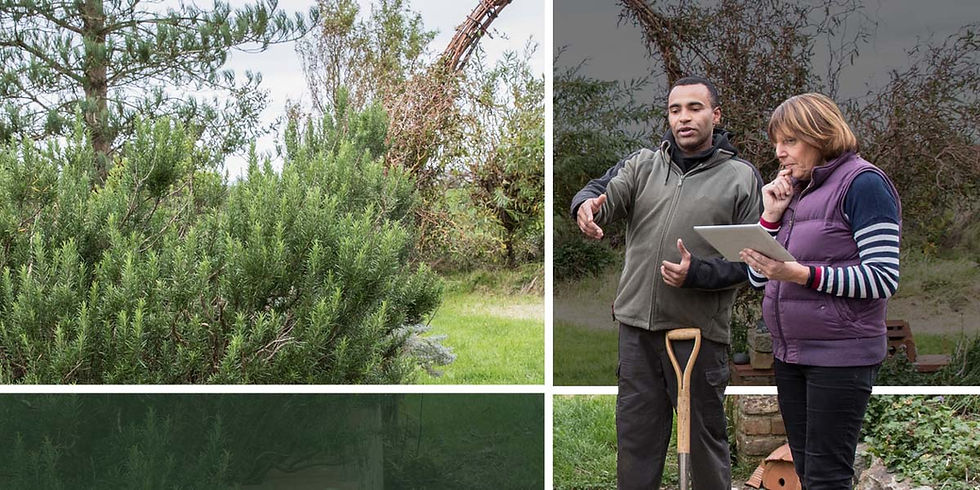Maryland summer landscaping Dos and Don'ts
- Rooted in Nature

- Jun 15, 2020
- 3 min read
Updated: Apr 30, 2024
June is National Great Outdoors Month, and no one appreciates the great outdoors quite like us at Rooted In Nature! This month also marks the start of summer, and with that comes changes to how we landscape and manage our plants and grass. For experienced green thumbs and beginners alike, here are some do’s and don’ts to remember when attempting to landscape your backyard jungle this season.

Do be on pest patrol.
Of all the summer landscaping tips that all too many people gloss over, the biggest one is the infestation of pests. There are a variety of lawn pests that pose a threat to landscaping, ranging from: grubs, sod web-worms, chinch bugs, and army-worms to many others that will lead not only to pesky pest infestations, but also brown patches of grass that will only prove to be an eyesore.
Do follow a mowing schedule.
Though this can range from once to multiple times a week depending on growth rates and desired height, cutting grass on the highest setting (and continuing to reduce it as the summer progresses) is key to preventing the onset of a brown and spotted lawn.
Remember that grass needs to stay at a certain level to fight off drought and other lawn hazards so do not cut too short, as this will destroy its natural ability to thrive. When in doubt, stay on the high side of that mower's blade settings.
Don't forget to feed and fertilize.
Fertilizing is one of the best and most important lawn maintenance choices that needs to be made. Take note, however: over-fertilizing or misapplying fertilizer can also have dire effects on your lawn, as the nitrogen in fertilizer can burn the grass, especially when temperatures are high. To prevent damage, opt for a slow-release fertilizer with a lower nitrogen content than usual and follow the directions carefully. Always choose fertilizers that are eco-friendly that won't harm the ground or any nearby waterways.
Do consider drought-resistant plants.
Take inspiration from the warmer temperatures by adding color to the yard in the form of new annuals or perennials—perhaps even some drought-tolerant plants, which are popular because they conserve water and require low-maintenance.
Make your home look even more inviting by lining walkways with colorful vegetation. Add flowers to garden beds, window boxes, or charming pots on the porch. Creative touches such as a climbing flower along a trellis or corner of a fence can easily serve as automatic attention-getters.
Additionally, consider planting shade trees throughout to add texture to the landscape, as trees of any size can be a beautifully classic accent to any yard. Try going for large evergreen trees on the South or Southwest side of the home to conserve energy and to reduce your energy bills. Consider planting trees to shade your air conditioner to help keep it cooler and running more efficiently.
Don't water at the wrong time!
There will be times throughout the day that are useless when it comes to watering your lawn because the water will evaporate before it reaches the roots. Watering during the hotter parts of the day is often ineffective as many plants go dormant. This means that water consumption is neither adequate nor efficient. The best time to water is in the early morning, while temperatures are lower and plants can make better use of the hydration— your roots will thank you!
Don't forget to enjoy your space!
With all that challenging work and effort, never forget to take a break and relax. Grab a lemonade and enjoy the beauty of your new backyard!
Do consult a summer landscaping professional.
Our team at Rooted In Nature knows that these summer landscaping tips can help you and your yard look better than ever for the the summer and beyond. With decades of experience with creating the perfect outdoor living space in yards all around Maryland, we take pride in providing exceptional customer service along witha diverse variety of landscaping offerings to help create your dream yard. Please contact us 443-846-0199 or info@rootedinnaturemd.com.



Σχόλια